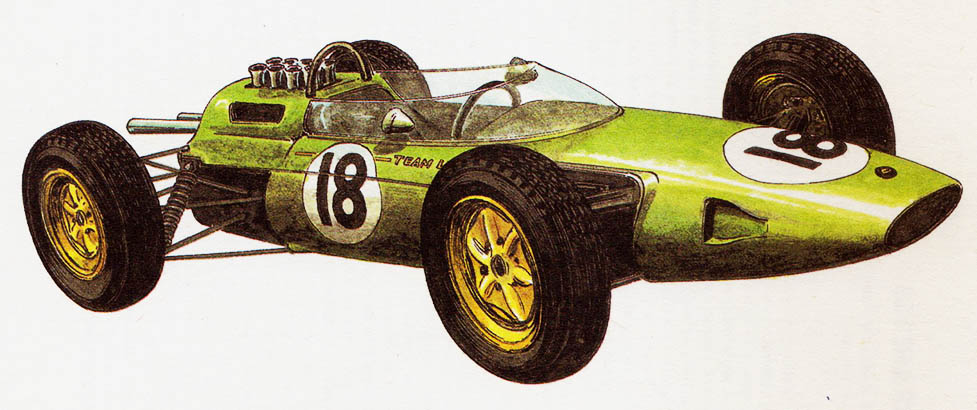LOTUS MK 25 – year 1963
Lotus Cars Ltd, Cheshunt, Herts., United Kingdom.
An interesting vehicle of the new formula, effective from 1961 year, was lotus 25. Colin Chapman, ingenious and original constructor, presented in 1962 New year of the year - a vehicle with a self-supporting shell body made of pressed sheets, so-called. monocoque. This started a revolution in the design of racing cars. Admittedly, it was a more expensive solution compared to tubular frames, but the new self-supporting frame was lighter and stiffer. Gradually, other companies also started to use it.

The load-bearing part of the body consisted of light closed-profile longitudinal members and crossbars for suspension of the wheels, steering system, protective arc behind the driver's seat and power unit. The wheels were suspended independently on transverse wishbones in a trapezoidal arrangement. The coil springs with telescopic shock absorbers are located at the front inside the body, at the rear, they were inclined in front of the drive shafts of the wheels. Fuel tanks with a capacity 115 And they were on both sides of the driver and behind him. Eight-cylinder Coventry-Climax FWMV V8 engine with cylinder bore was used 63 mm and piston stroke 60 mm. The engine had a capacity 1496 cm3 and reached power 137,6 kW (187 KM) by 8500 RPM. Lucas transistor ignition and four double Weber carburetors were used. The power was transmitted via a five-speed ZF gearbox. On the rims, cast from the electron, Girling disc brakes are fitted. Chapman, by constructing this model, aimed at minimizing the frontal area of the vehicle. The competitor was in a recumbent position, and there was not a millimeter of free space around the extremely small steering wheel. Even the shift cable passed through the side fuel tank. The car had a weight 450 kg and reached speed 280 km/h. Excellent driving parameters, high engine power and the skills of Jim Clark's rider allowed Lotus to win the world championship for car manufacturers 1 in year 1963. At the same time Jim Clark, by winning seven of the ten Grand Prix races and taking second place, won his first Formula One World Championship title 1.